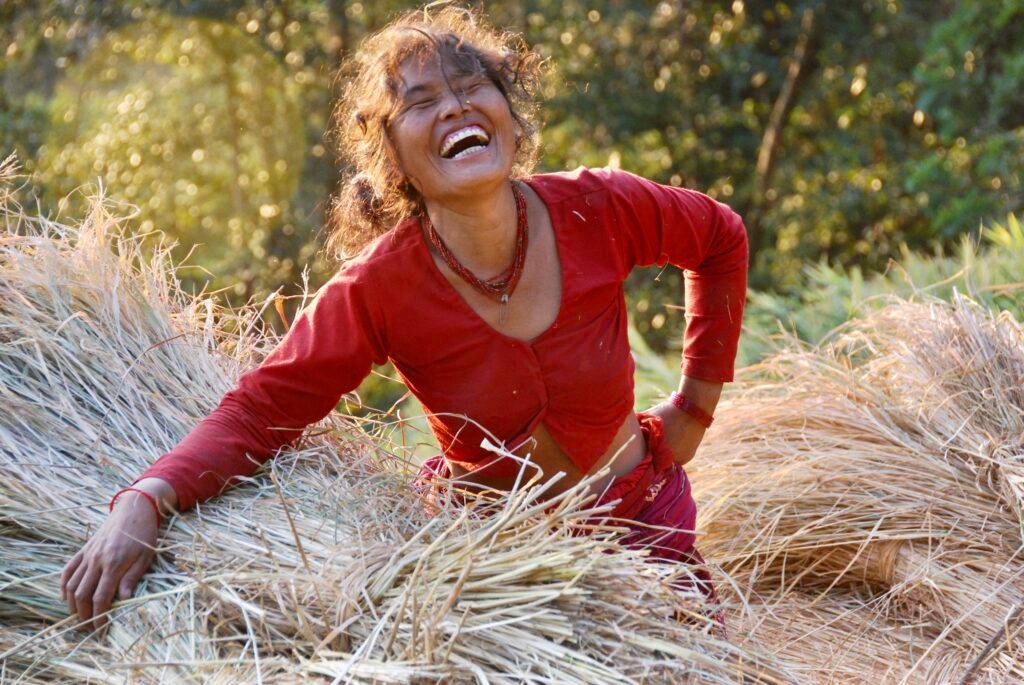Gahare is situated in the foothills of the Himalayas, not really a mountain as such when compared with the snowy peaks that dominate Nepals landscape, but still a good 3 to 4hours from bottom to top – for me anyways.I lived in this village for 2 years whilst volunteering for Hugging Nepal and have returned many times since, even my son Jamil has met everyone.
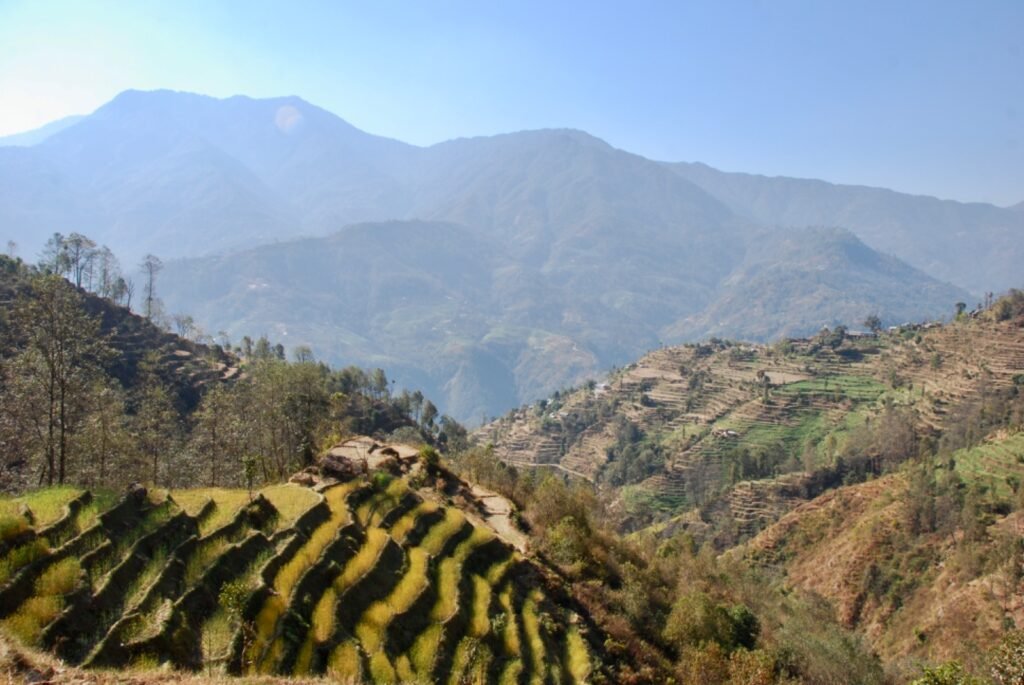
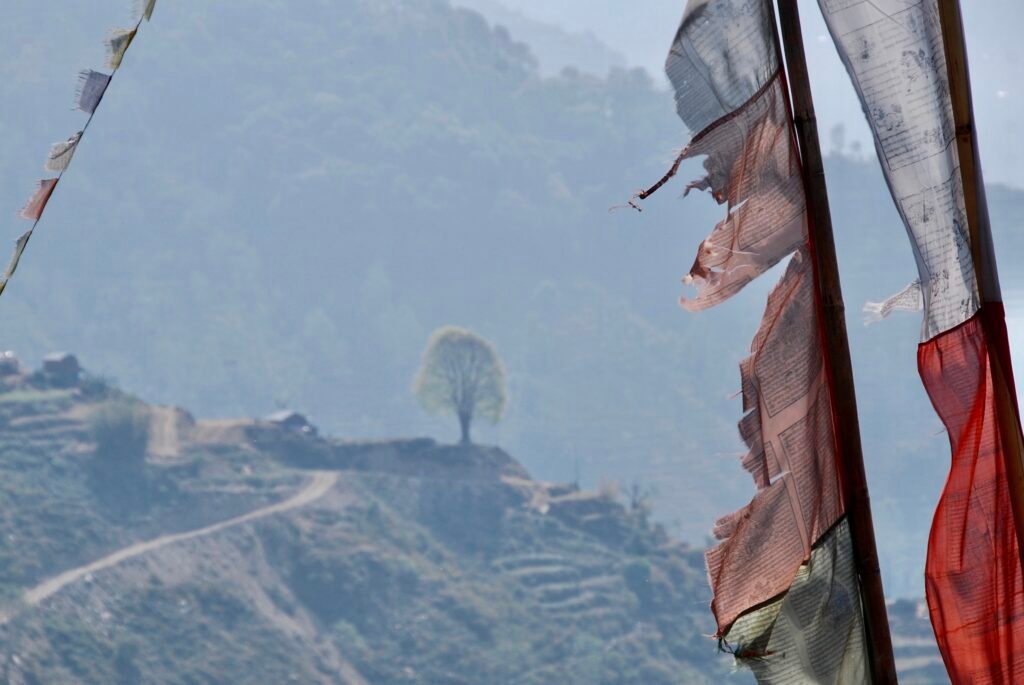

Over the centuries, the Tamang people have learned to cultivate and thrive in these difficult conditions. They terrace the landscape to produce crops, forage, and rear animals so that they can lead a self-sufficient life with no electricity (until recently). The stamina and endurance these people have is truly amazing, I feel ashamed when working with them or even just walking, as I just am not capable to keep up with their pace.
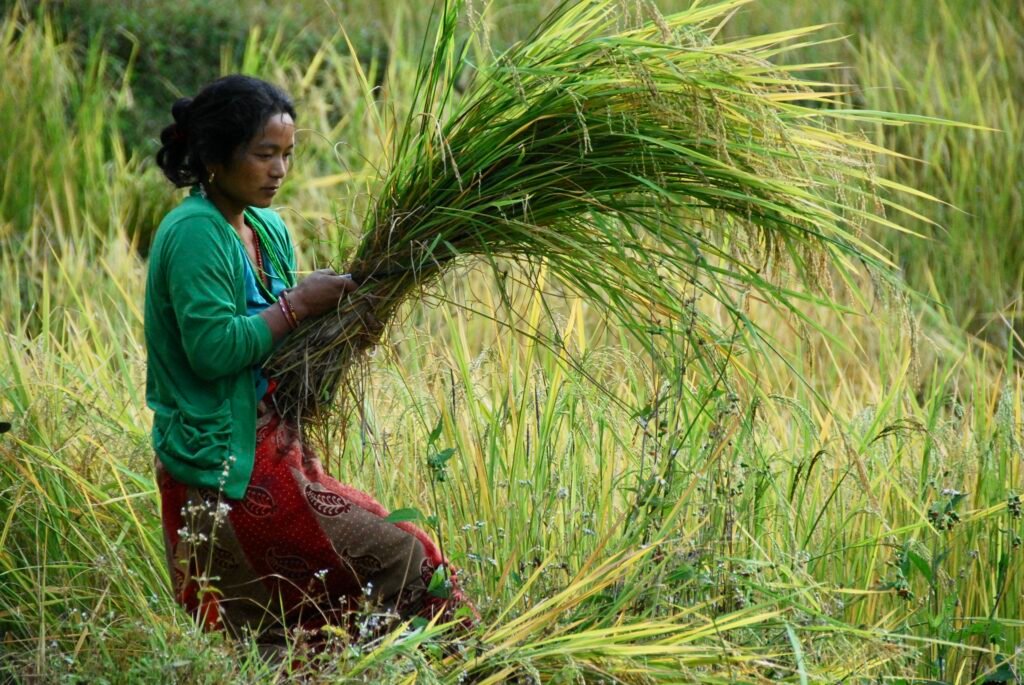
The land is first prepared with manure and then later ploughed, which seems simple enough – but with no vehicle access, everything is done by hand (or should I say head?). The Tamang people carry everything by a strap called a namlo which they wrap around the basket or whatever they want to move. They can carry up to twice their body weight up steep, almost-inaccessible ravines. They have incredibly strong necks!


I watched Meme prepare the plough ‘halo”. Meme is in his 90s and plays a big role in family and village life. Up before sunrise, he starts his day usually by chopping and collecting wood and bamboo ( to make baskets). During the day he stays close to the house repairing and making things. When it was his turn to rebuild his house, he dismantled the ruins, dug the foundations, and still found time to have some raksi in the evenings (the Nepalese equivalent of moonshine).

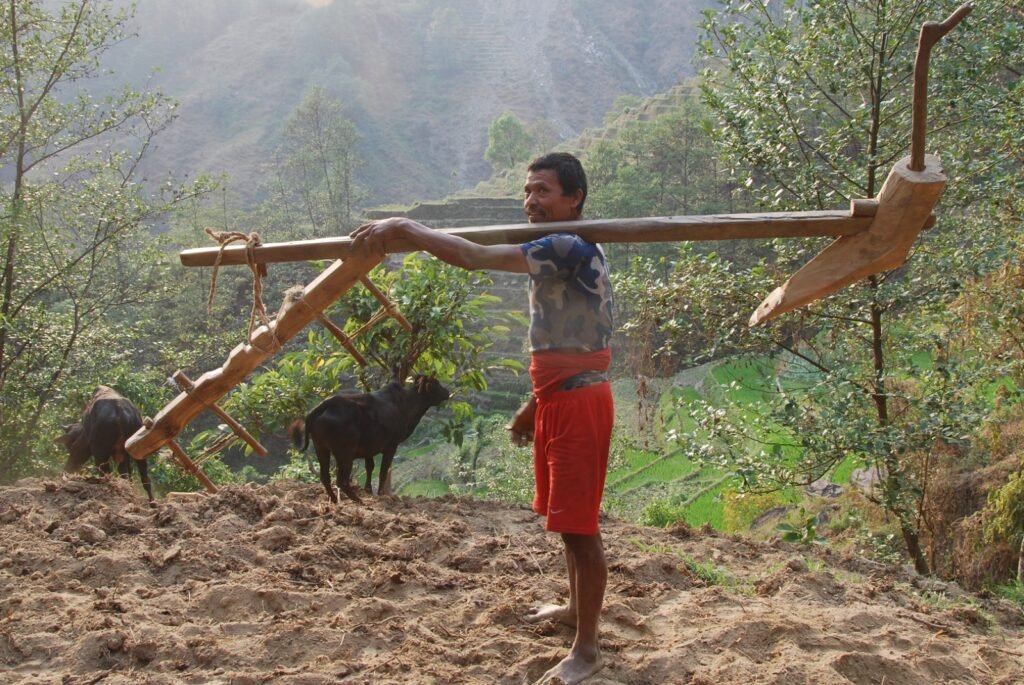
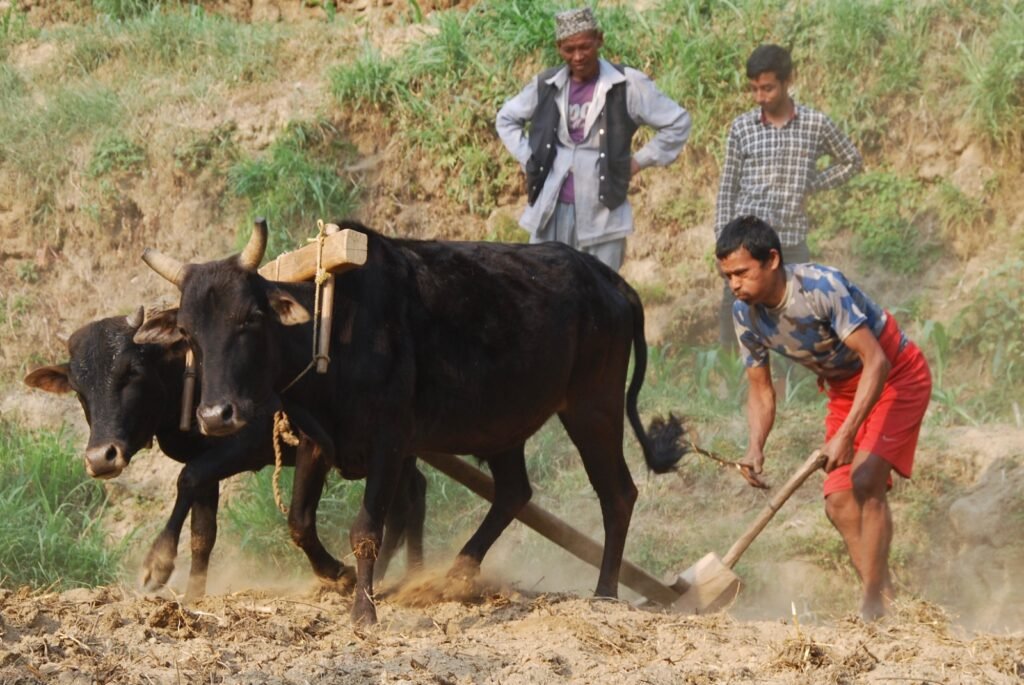
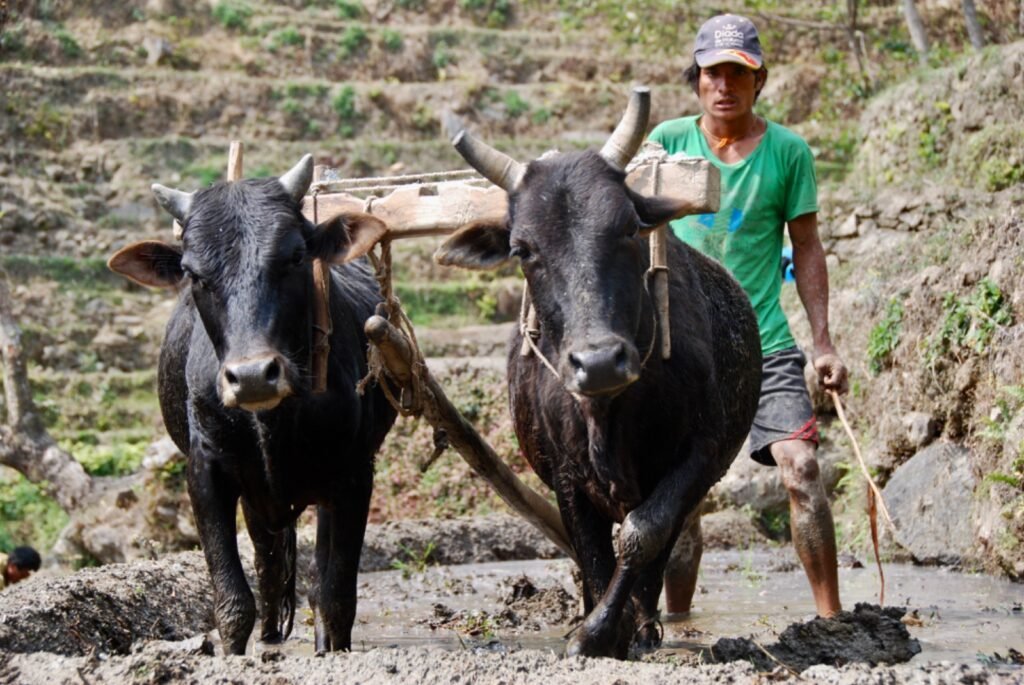
Working the way up the mountain, the men plough the terraces and the woman follow, planting the rice. This is back-breaking work and everyone helps. The best technique I discovered was basically not to stand up, but to shuffle backwards, bent over for as much of the time as possible.

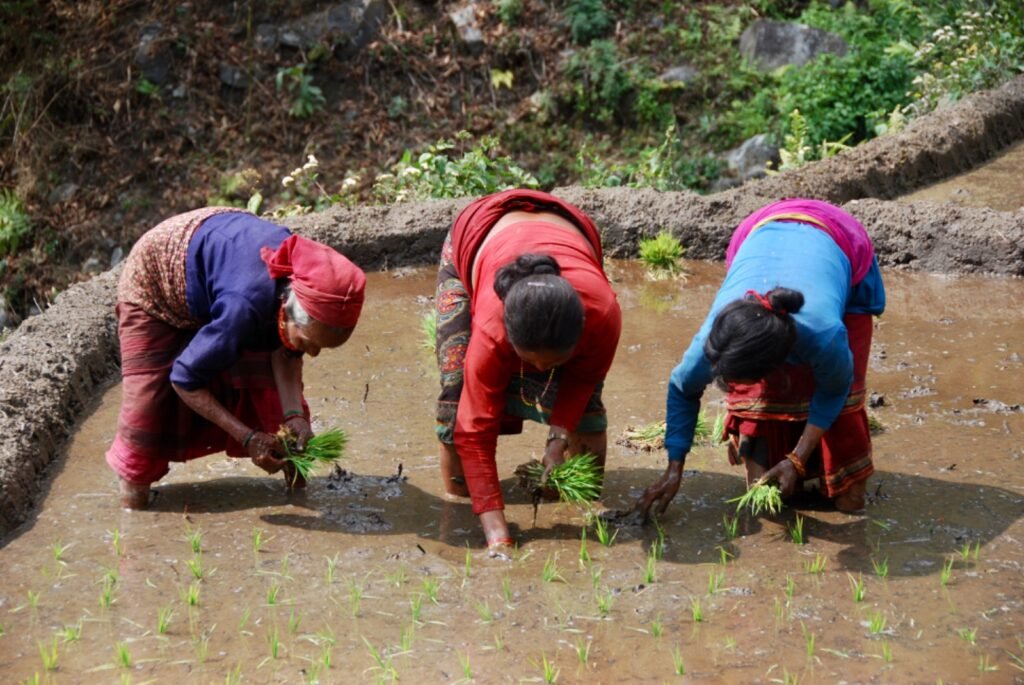

No matter how hard the work was, the women always found time to smile. Working alongside these people has had a profound effect on me. I have so much respect, admiration, and love for the people of Gahare. facing adversity, they just carry on and smile, they don’t have the options we have in our 1st world lifestyles.
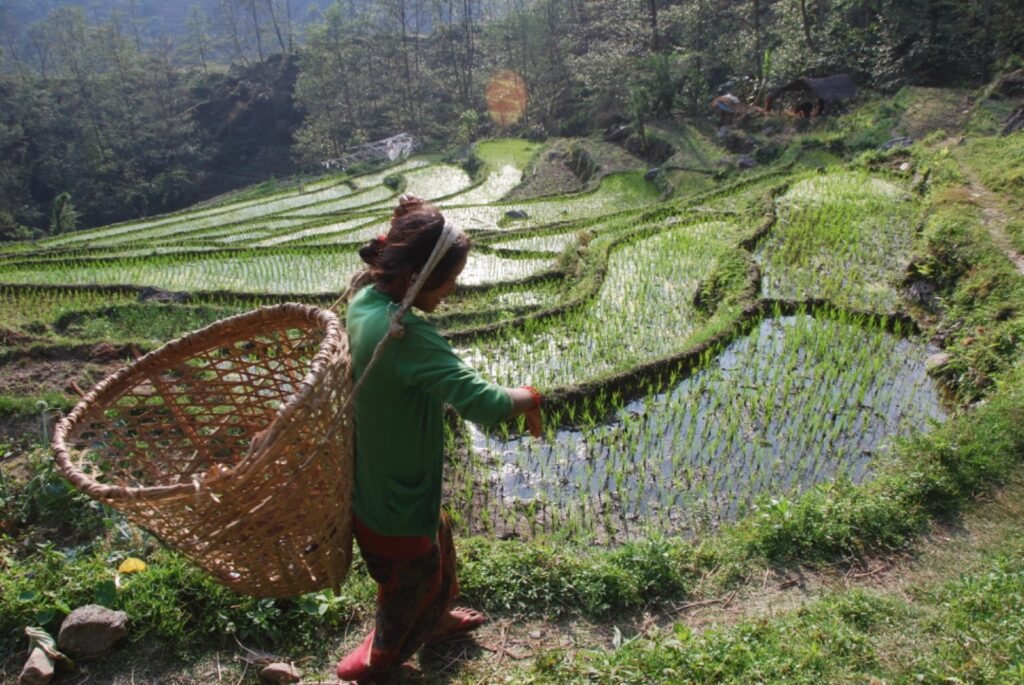

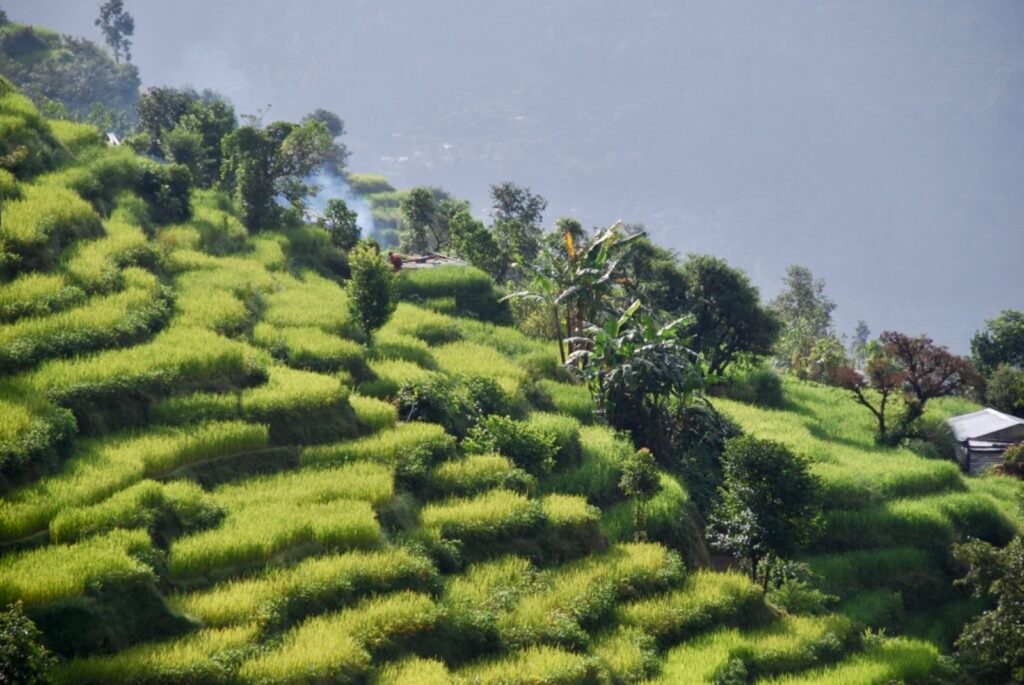
As Mylee weeds through the rice terraces, she disturbs insects, which the drongo bird picks off mid-air. I watched these beautiful moments whilst taking my showers in the late afternoon, after finishing work for the day. Our shower consisted of a piece of bamboo hollowed out and stuck into a mountain spring, with rocks on the ground to crouch on. you couldn’t use soap or any other products as the water feeds the rice terraces below. Just grit to scrub. It was open to all elements and all passerby’s as it was literally on the path. a communal spot where everyone would stop, take a drink, wash their faces, and take in the view. I would often stop and help Mylee before having a shower.
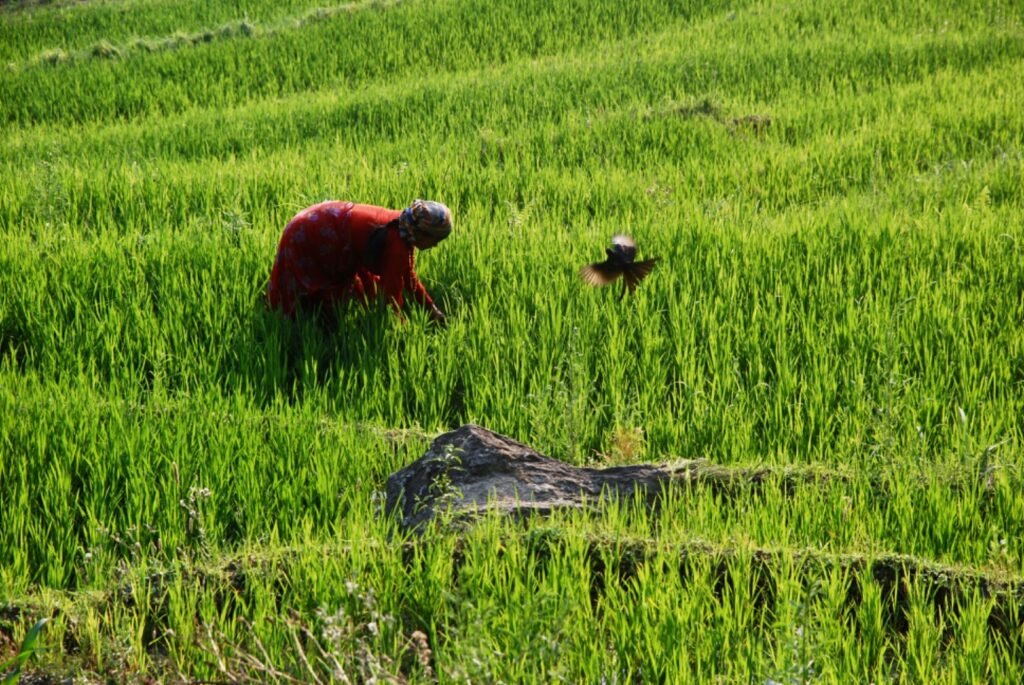
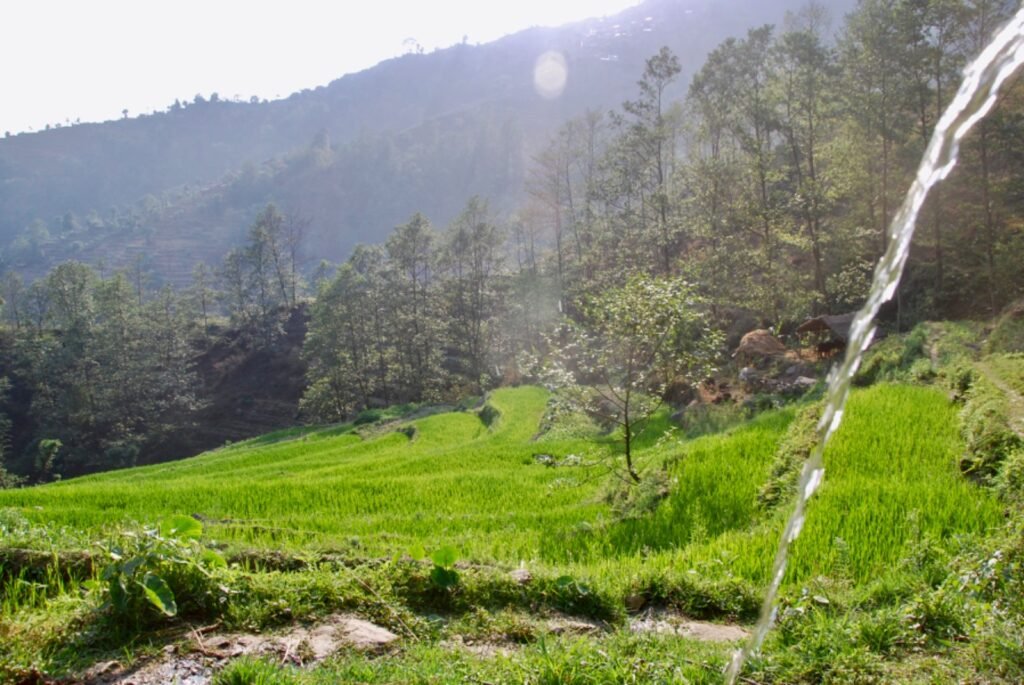
It’s an early start for cutting the rice – everyone in the hamlet, who is able, comes down to give a hand. Starting at the bottom, they work their way up the terraces. In what appears to be effortless, fluid movements cutting, tying, and laying the rice to dry. The rhythm is only broken when Mylee brings food and refreshments, dal bhart, the staple diet of Nepal. Rice and lentils. A popular Nepalese saying is ‘ DHAL bhart POWER 24 HOUR and it’s true.

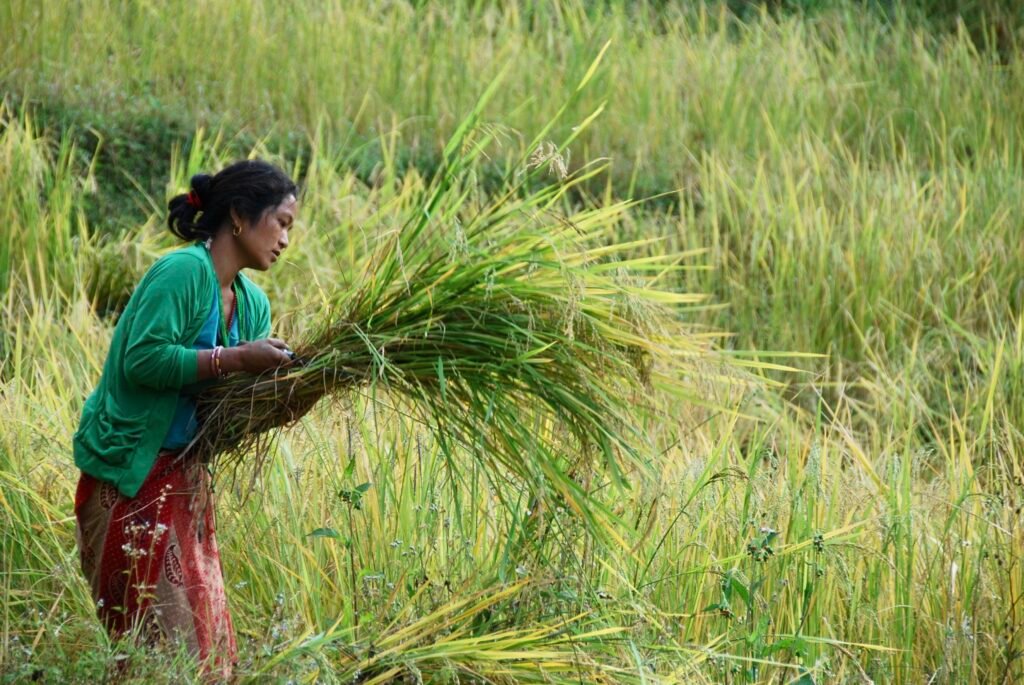

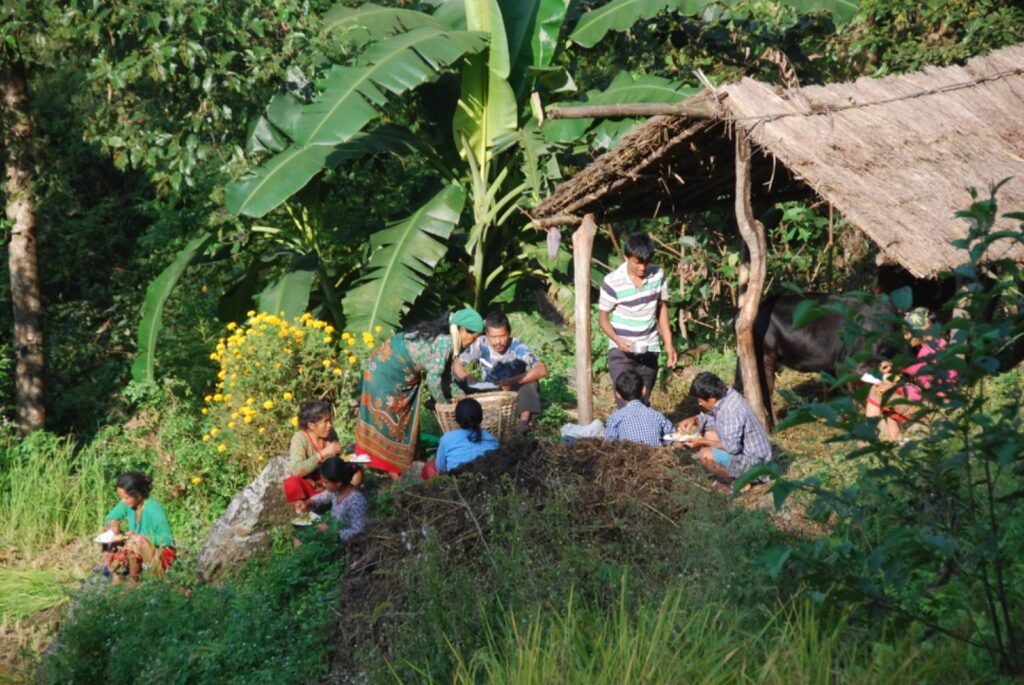
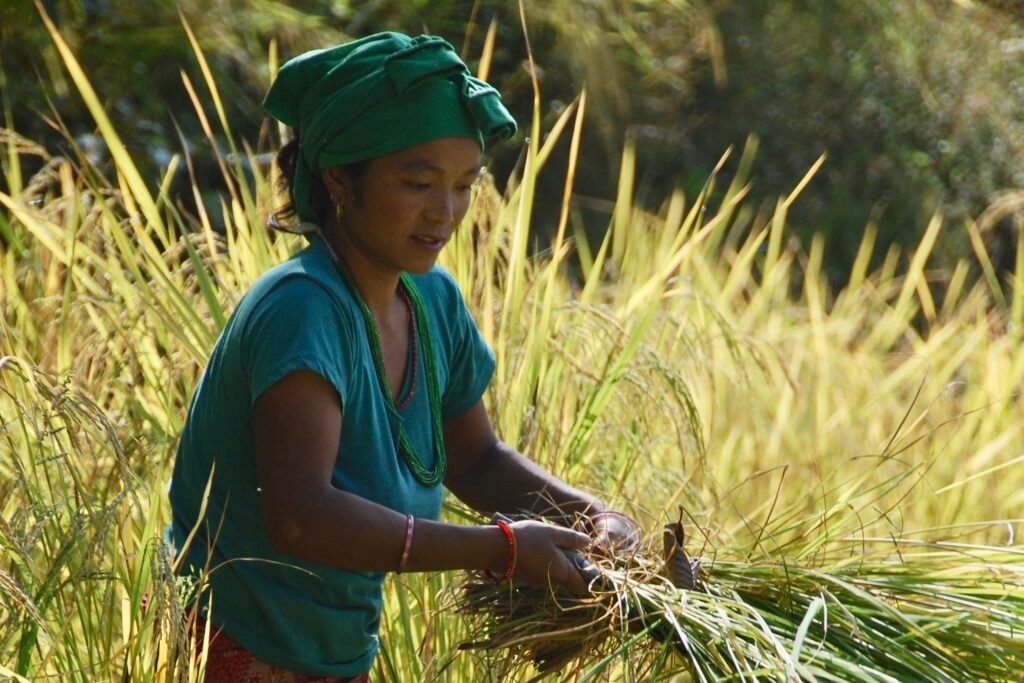
When the rice is dried sufficiently, they choose the middle of the land to create a threshing circle. The women gather the rice into bundles and the men carry and thresh. Baba carries the threshing stone uphill to the site. It easily weighs more than he does – maybe twice as much. Unable to use the namlo due to its size and shape, he balances it on his back and grips it with his hands behind his back. Baba is in his 50s and is fitter and strong than most people I know in their 20s. He is known locally as the ’strong energetic man’
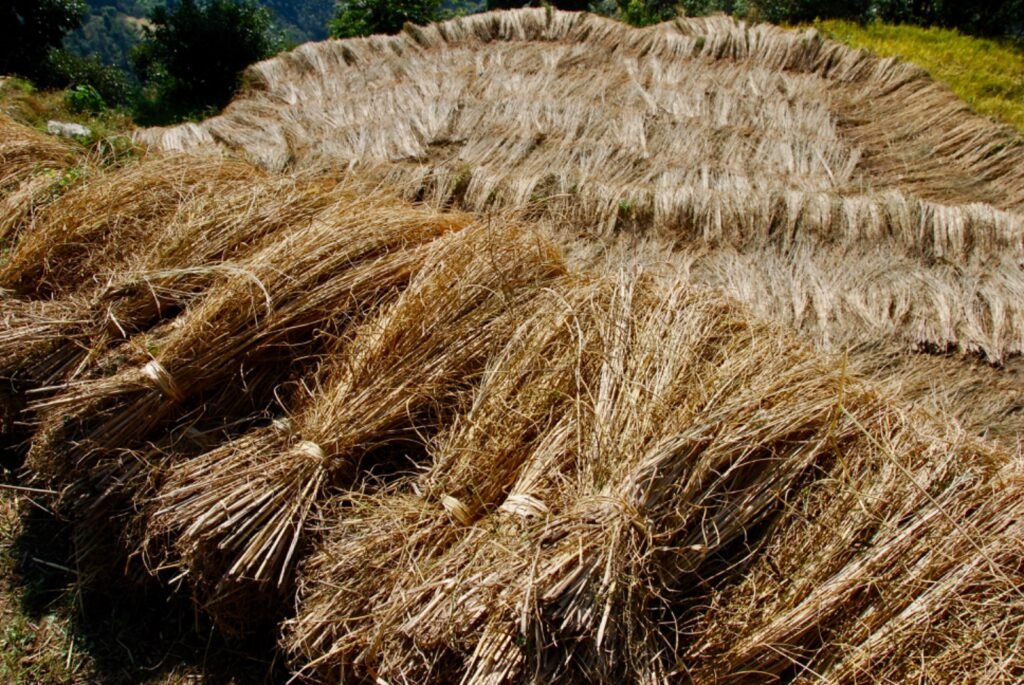

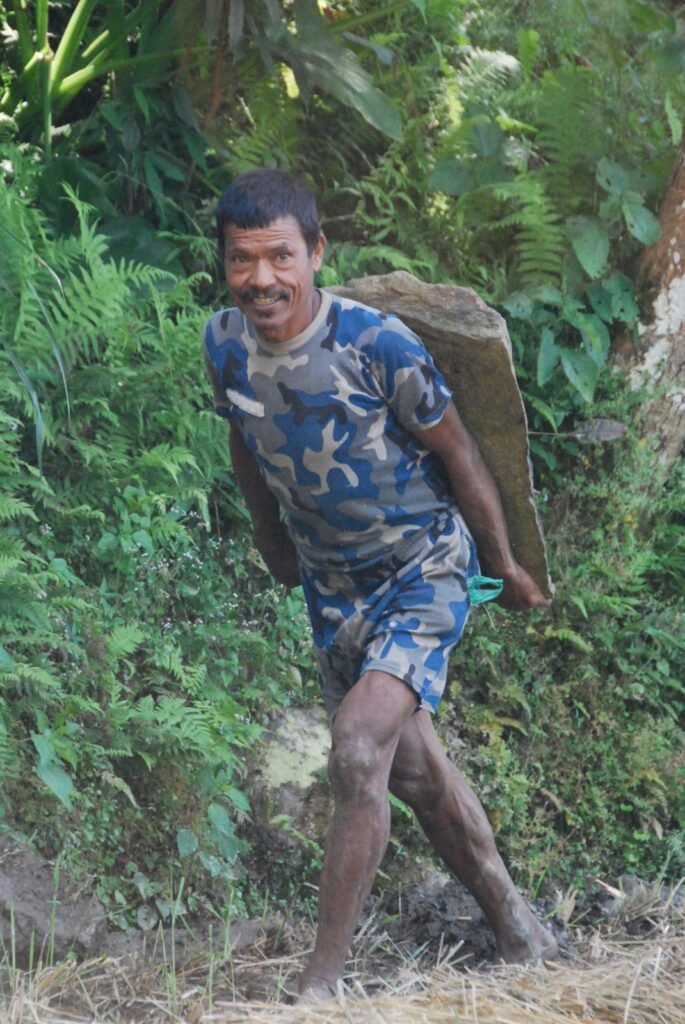


It is late afternoon and the sun casts a beautiful light across the dried rice, everything glowing in the golden light. What remains of the rice plant is then stacked and tied into huge bundles, that look impossible to move without a forklift or such. Bending over backwards, they position themselves with the namlo across their forehead, and then with a big helping hand from behind, they lift it onto their backs and straight away start walking nimbly across the terraces and tiny ledges into the distance.


Everyone helps carry the dried stacks back down the mountainside where they are stacked, ready to use in a multitude of ways – but that is another story in itself.


